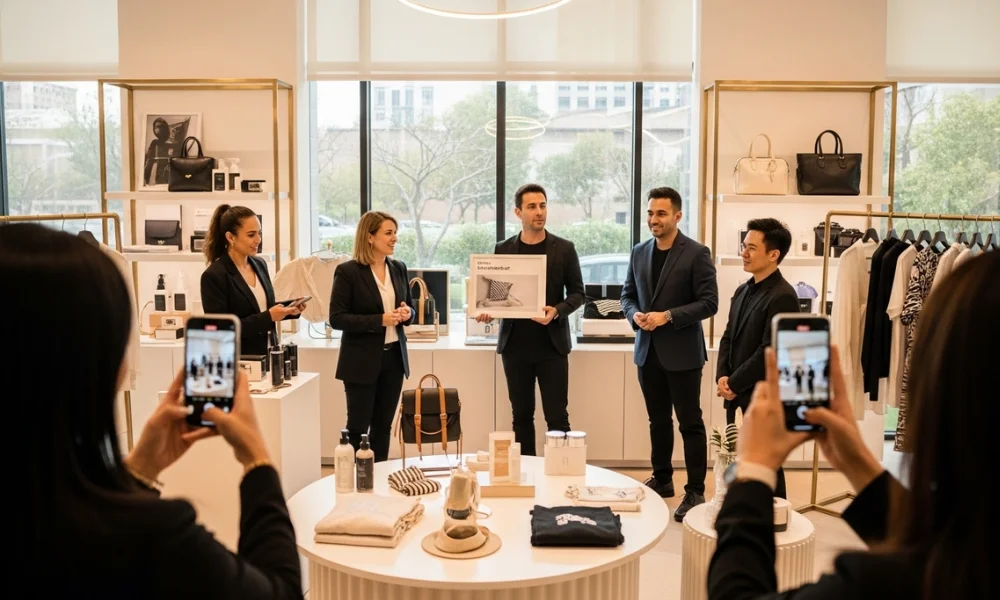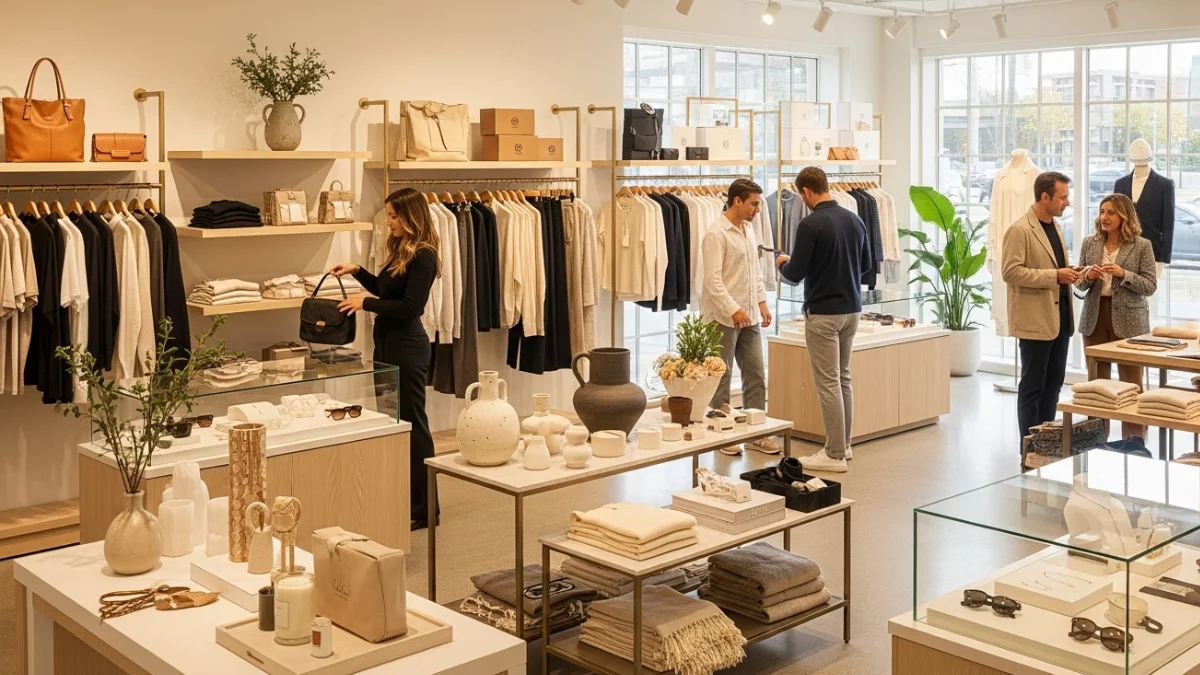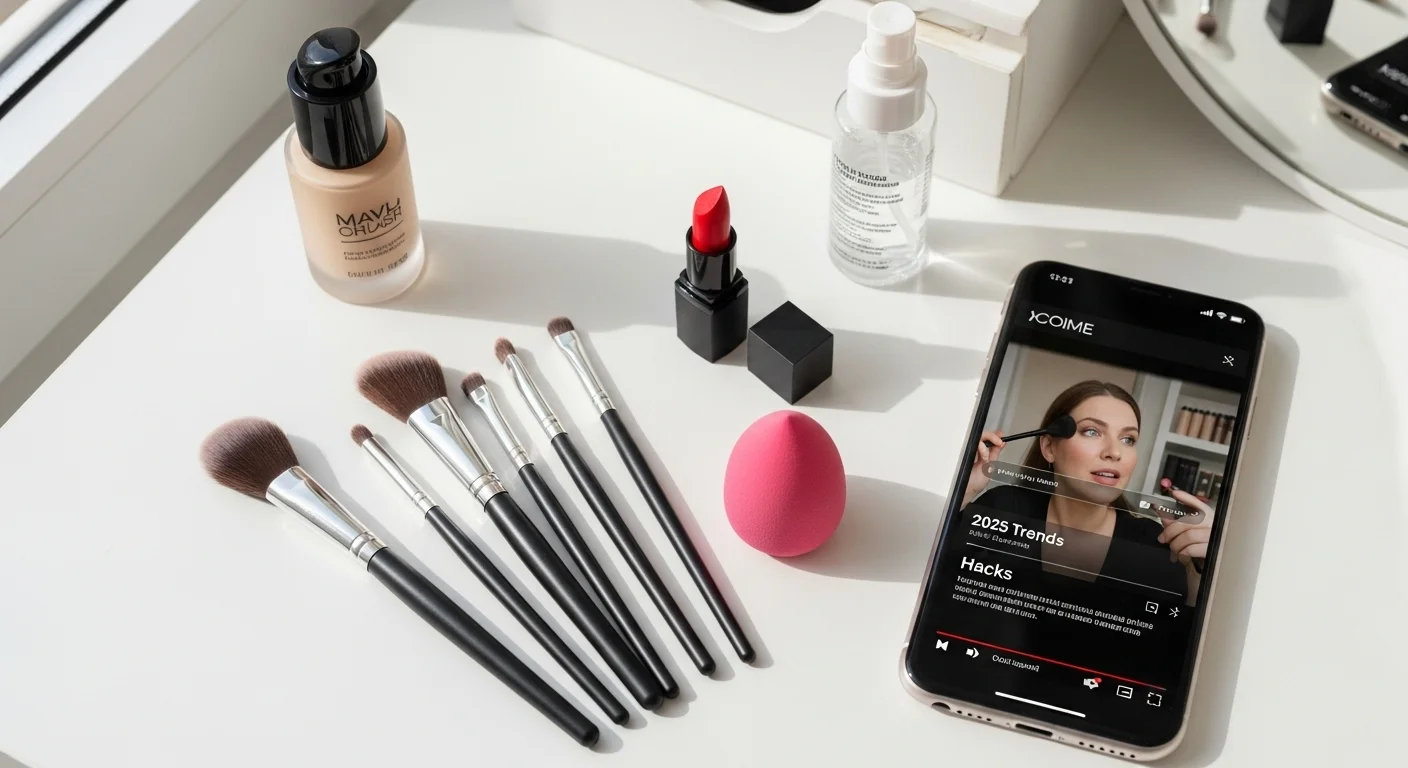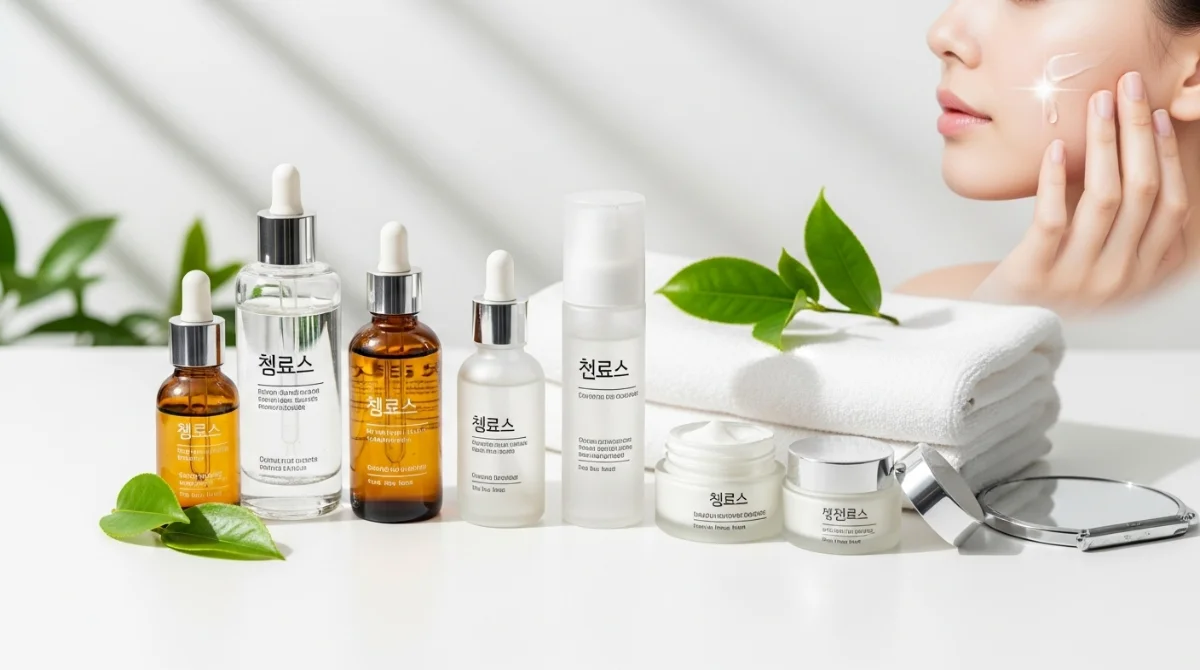A lifestyle collection transcends products, speaking to emotions and identity. It allows brands to offer items that reflect the style, values, and everyday aspirations of their customers. When a brand launches its lifestyle collection, it’s creating an experience, not just a catalog of items.
What Is a Lifestyle Collection?
A lifestyle collection is a curated range of products embodying a brand’s lifestyle message. It may include clothing, Apartment décor, accessories, or digital items that together tell a story. This approach fosters loyalty and transforms customers into advocates by connecting with their aspirations.
How Lifestyle Collections Differ From Regular Product Lines
Regular product lines focus on function, but lifestyle collections focus on feeling and identity. They reflect a brand’s values and show how its products fit into customers’ daily lives. This curated approach fosters a stronger emotional bond with buyers, making products feel more exclusive.
Why Brands Launch a Lifestyle Collection

Many companies launch lifestyle collections to deepen their connection and show who they are. They aim to go beyond selling individual products and create a comprehensive ecosystem that integrates into a buyer’s life. This approach boosts loyalty, increases order value, and effectively opens new revenue streams.
Enhance Brand Loyalty and Identity
A lifestyle collection allows a brand to show its personality in a tangible way. It moves the conversation from “what we sell” to “who we are” and “what you belong to.” This deeper identity creates stronger loyalty because customers feel part of a shared lifestyle.
Expand Revenue Beyond Core Products
Adding items that complement core offerings helps brands open new revenue channels. A car company can sell branded apparel while a gym brand can sell kitchen gear and yoga mats. These extensions feel natural because they align with the original brand values and habits.
Create Aspirational Appeal
Aspirational products inspire customers to dream of a better version of themselves. Lifestyle collections show how a brand fits into an ideal life through consistent storytelling. This aspirational connection boosts perceived value, making people proud to share their purchases.
Key Elements of a Strong Lifestyle Collection
A strong lifestyle collection is carefully curated to build a consistent story. Each piece works with others to create a memorable and recognizable experience for customers. By following certain key elements, brands can ensure their collections stand out clearly.
Cohesive Design Language and Visual Consistency
Visual consistency gives customers a clear sense of identity across all products. Colors, materials, packaging, and photography should feel like parts of the same story. This cohesive design language makes products more memorable and increases perceived quality quickly.
Aligned Product Categories
Select product categories that align with your audience’s lifestyle and habits. A fitness brand might offer apparel, water bottles, and wellness journals to strengthen its presence. Aligned categories ensure that customers view the products as a natural extension of the brand.
Storytelling and Thematic Consistency
Storytelling ties everything together and gives meaning to each product offered. Themes can be derived from your brand’s history, customer aspirations, or seasonal trends to ensure relevance and alignment with your brand’s values. Consistent themes across marketing and packaging help customers emotionally connect with your products. and stay ahead of lifestyle trends.
Packaging, Presentation, and Photography
Presentation can elevate perceived value and quickly attract organic social media attention. High-quality packaging and cohesive photography signal care, quality, and a premium brand story. Beautiful visuals also encourage customers to share images with their friends online.
10 Inspiring Lifestyle Collection Examples
Below is a table showing some standout lifestyle collections, their focus, and features. Each brand uses its collection to extend its identity beyond core products. Customers see these products as part of their personal lifestyle rather than just merchandise.
| Brand | Focus Area | Standout Features |
|---|---|---|
| Mercedes-Benz Lifestyle Collection | Automotive merchandise | High-end accessories, clothing, and travel gear with brand DNA |
| Volvo Car Lifestyle Collection | Automotive lifestyle | Eco-friendly design, Scandinavian minimalism, travel items |
| MP Activewear Lifestyle Collection | Fitness apparel | Athleisure, versatile everyday wear, curated seasonal drops |
| Ralph Lauren Home Lifestyle Collection | Fashion + home | Classic American style, coordinated furniture and textiles |
| Apple Lifestyle Accessories | Tech + lifestyle | Sleek design, minimal branding, seamless device integration |
| Nike Jordan Lifestyle Collection | Sportswear | Limited-edition drops, streetwear culture, exclusive releases |
| Starbucks Reserve Lifestyle Collection | Coffee culture | Premium mugs, accessories, and travel items |
| Patagonia Lifestyle Gear | Outdoor + sustainability | Eco-friendly materials, repairability, and community focus |
| Disney Lifestyle Collection | Entertainment + home | Character-themed products, cross-generational appeal |
| LEGO Lifestyle Products | Toys + adult lifestyle | Desk décor, apparel, and collaborations with designers |
Why These Examples Stand Out
Each brand extends its identity beyond core products to reach customer lifestyles. They offer items that match the aspirations and daily habits of their target audience. Their consistent themes and visuals make collections feel like a natural extension of the brand.
How to Create Your Own Lifestyle Collection

Building a lifestyle collection requires careful planning and a deep understanding of your audience. You must define your brand identity clearly and choose product categories wisely. Following these steps helps you create a cohesive and profitable offering that customers love.
Define Your Brand Identity and Target Lifestyle
Begin by clarifying what your brand represents and who you serve. Identify the values, aesthetics, and daily habits of your ideal customers to guide choices. Without this clarity, your collection will feel random and fail to resonate properly.
Choose Categories and Products
Pick product types that complement your existing offerings and customer needs effectively. Ensure they feel natural rather than forced, so your audience perceives them as authentic. For example, a wellness brand might thoughtfully add candles, journals, and herbal teas.
Develop Visual Coherence and Theme
Create a unified look across packaging, product photography, and marketing channels. Use mood boards to align your team on colors, materials, and storytelling choices. This consistency helps your collection stand out both online and in-store, making it very clear.
Source Quality and Manage Production
Quality control is vital because lifestyle products are often purchased as gifts, making them particularly susceptible to quality issues. Reliable suppliers and sustainable materials can significantly and quickly elevate your collection’s reputation.
Launch and Marketing Strategy
Plan a coordinated launch with social media teasers and influencer previews. Highlight the story behind the products and show how they fit into the customer’s life. Limited-edition or seasonal drops create a sense of urgency and excitement for your collection.
Marketing and Launch Strategies for a Lifestyle Collection
Effective marketing makes the difference between a forgotten collection and a cultural hit. Brands that plan their campaigns with a focus on storytelling and community engagement often achieve long-term success. Here are some proven strategies for making your lifestyle collection a success quickly.
Storytelling and Brand Narrative
Share the story of your collection in a personal and authentic tone. Explain why you created it, what values it represents, and how it helps customers live better lives. A clear narrative makes your products more relatable and memorable to the audience.
Influencer and Content Marketing
Partner with influencers who genuinely align with your brand lifestyle and vision. They can create organic content that authentically showcases your products in real-life situations. User-generated content and honest reviews also help establish trust more quickly with customers.
Visual Social Media and Mood Boards
Use Instagram, Pinterest, and TikTok to showcase your products in aspirational settings. Mood boards, behind-the-scenes photos, and themed shoots effectively capture the attention of customers. Consistent visuals across platforms naturally reinforce your identity and lifestyle message.
Bundling, Limited Editions, and Exclusivity
Offer curated bundles or limited-edition releases to create scarcity and buzz. People love feeling part of an exclusive club, especially when it reflects their identity strongly. Bundling also increases the average order value and simplifies decision-making for buyers.
Common Mistakes and Pitfalls to Avoid
Even strong brands can make mistakes when launching a lifestyle collection. Avoiding these pitfalls will save you time and significantly protect your brand reputation. Learning from others’ errors will help you launch smarter and have a greater overall impact.
Over-Diversifying Without Coherence
Adding too many unrelated products can confuse customers and dilute your brand identity. Focus on a core theme and add products gradually to maintain clarity and coherence. A smaller, cohesive collection is more effective for recognition than a large, random one.
Weak or Inconsistent Branding
If your visuals, packaging, or messaging are inconsistent, customers quickly lose trust. Ensure that all elements cohesively come together for credibility and recognition. Consistency builds confidence and makes your brand easier for customers to remember.
Poor Photography or Storytelling
Low-quality photos and weak stories instantly and significantly reduce perceived value. Invest in professional images and clear narratives for each product you launch. Great visuals and words make customers excited to share and buy happily.
Ignoring Customer Feedback or Lifestyle Trends
Trends and lifestyles evolve quickly, so it’s essential to stay actively informed. Ask for customer input, watch social media conversations, and adjust your approach accordingly. Staying agile keeps your offerings fresh and desirable in a dynamic marketplace.
Metrics and KPIs to Measure Success

Measuring success helps you refine your collection and future launches effectively. Track both financial and engagement metrics to easily get a complete performance picture. Numbers will show what resonates with your audience and what needs improvement next.
Sales per SKU and Category
Examine how each product and category performs individually across various sales channels. This will help you identify winners and potential drop items in a timely manner. High performers can be expanded or turned into new, limited-edition items quickly.
Average Order Value and Basket Size
Determine whether customers are purchasing multiple items together in each transaction. A healthy basket size indicates strong cross-selling and broad appeal effectively. Bundles and curated sets often help raise this number for your brand.
Return Rates and Customer Retention
High return rates can signal quality or expectation issues that need attention soon. Low retention indicates that your story isn’t resonating with customers and requires improvement. Use this feedback to enhance your products and messaging, fostering stronger loyalty.
Social Engagement Metrics and Brand Sentiment
Monitor likes, shares, comments, and brand mentions across digital platforms carefully. Sentiment analysis shows whether people view your collection positively and consistently. Engaged communities often drive future launches and collaborations naturally and successfully.
Conclusion
A lifestyle collection is more than a group of products; it’s a brand experience. By understanding your audience, curating products that align with their needs, and telling a consistent story, you can create a collection that sells and inspires customers.
Begin by defining your brand identity, selecting a few key categories, and carefully planning your launch for lasting success.












